Xeriscape Landscaping Plants For The Arizona Desert Environment.
Pictures, Photos, Information, Descriptions,
Images, & Reviews.
Vines.
Yuca Vine, Merremia aurea.
We Are Proud Of Our SafeSurf Rating!
Click On Any Of The Following Links By Amazon.Com
For Books, & Videos About Wildflowers Of Arizona & The Southwest USA. No Obligation!
| Yuca Vine, Merremia aurea. Photo Taken At University Of Arizona, Maricopa County Cooperative Extension. Phoenix, Arizona. On June 1, 2008. |
|---|
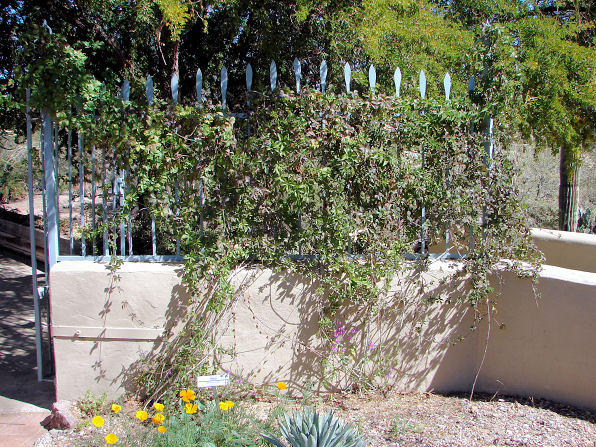 |
| Yuca Vine, Merremia aurea. Photo Taken At Desert Botanical Garden. Phoenix, Arizona. On March 3, 2008. |
| Yuca Vine, Merremia aurea Flower. Taken At University Of Arizona, Maricopa County Cooperative Extension Phoenix, Arizona. On June 1, 2008. |
 |
| Yuca Vine, Merremia aurea Flower. Taken At University Of Arizona, Maricopa County Cooperative Extension Phoenix, Arizona. On June 1, 2008. |
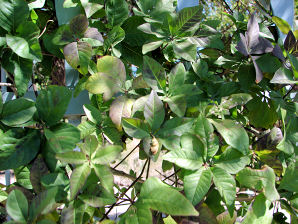 | 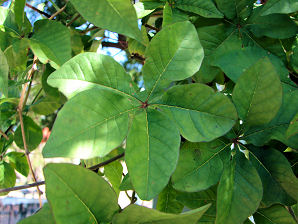 |
| Yuca Vine, Merremia aurea. | Yuca Vine, Merremia aurea. |
|---|---|
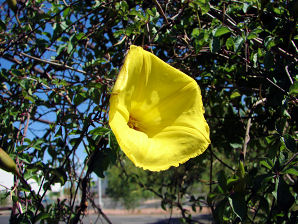 | 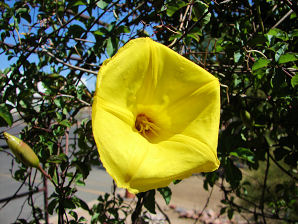 |
| Yuca Vine, Merremia aurea. | Yuca Vine, Merremia aurea. |
 |  |
| Yuca Vine, Merremia aurea. Seed Pod Unopened. July 4, 2008. | Yuca Vine, Merremia aurea. Seed Pod Star Shape Open. July 4, 2008. |
 |  |
| Yuca Vine, Merremia aurea. Seeds. July 25, 2008. | Yuca Vine, Merremia aurea. Seed. July 25, 2008. |
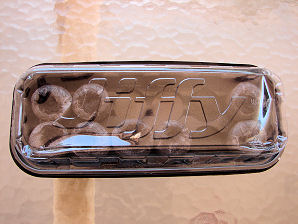 |  |
| Yuca Vine, Merremia aurea. Seed Sprouting In Jiffy Pot. July 28, 2008. | Yuca Vine, Merremia aurea. Seed Sprouting. July 28, 2008. |
 | 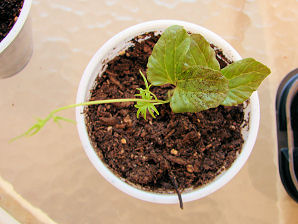 |
| Yuca Vine, Merremia aurea. Seedling. July 31, 2008. | Yuca Vine, Merremia aurea. Seedling. July 31, 2008. |
 /
/

Yuca Vine.
We wish to thank Wikipedia, the free encyclopedia for some of the information on this page. We share images and information with Wikipedia. Yellow Morning Glory or Yuca Vine is native of the southern half of Baja California. It can attain a size of over 25 feet in length. It has green star-shaped foliage with bright yellow, 2 - 4 inch morning glory, trumpet-shaped flowers during the summer and fall. Merremia aurea grows well in full sun. During winter it freezes back but recovers quickly during the spring. It grows best on a wall or fence. Use as wind or sun screen in a patio area. It seems to be a difficult plant to propagate. It has a papery seed pod that contains up to four seeds which look like black velvet - covered rabbit droppings. The seeds are very hard. It is said to plant the seeds in the Fall. The root is dug, carried, roasted, and eaten by the native people in Baja California. It is known as Peric�. This perennial vine is a great Xeriscape plant in Arizona, if you can find one for sale and if you can get one to grow. The plant needs supplemental watering to do well. This plant is also attractive to bees, butterflies and/or birds. The two plants in the photos on this page; are the only known Yellow Morning Glory Vines in the State Of Arizona. Well, we have some good news! We have learned how to get these plants to grow! First, gather the seed as soon as the seed pod ripens, before it falls from the plant or very soon after. Second, scarification of the seeds is necessary. We hold the seeds in a pair of pliers and scrape them through the black seed coat, with a file, until the cream white part of the seed embryo starts to show. Avoid touching the seed scar where the seed was attached to the seed pod. Third, we plant them in a Jiffy Regular Windowsill Greenhouse, which holds 12 seed pellets. Of course, any other type of seed pellet should work. Fourth, set them next to a window on the inside of your home where the temperature is about 75 - 80 degrees F. Two to three days later, the seed shoots start to appear and in about 4 - 5 days they are really starting to grow!
Quick Notes:
Height: Height to about 15 - 25 feet. Equal or greater spread.
Flowers: Bright yellow, 2 - 4 inch morning glory, trumpet-shaped flowers. They open at about 9 AM and close at about 4 PM.
Flowering Time: May - July, in Phoenix, Arizona.
Seed Pod: A papery, winged, seed pod, with four sections, that turns tan in color. Contains 4 black hard seeds only under ideal conditions. Usually only 1 - 3 seeds.
Leaves: Dark green, glossy, palmately compound, star-shaped leaves.
Found: Native to to central Baja California, central Sonora and south throughout most of Mexico. The USDA claims it is native of the USA (AZ).
Hardiness: Its underground tuber should provide a winter hardy plant surviving to about 15� F.
Soil pH requirements:
Sun Exposure:
Elevation: 0 to 2,500 feet In Arizona.
Habitat: Chalky/alkaline, Dry, Sandy, Well-drained/light soils. An ideal xeriscape landscape plant in Arizona.
Miscellaneous: Photos Taken At Desert Botanical Garden, Phoenix , Arizona On March 3, 2008 and at the University Of Arizona, Maricopa County Cooperative Extension Office Phoenix On June 1, 2008.
|



We Are Proud Of Our SafeSurf Rating!
Click On Any Of The Following Links By Amazon.Com
For Books, & Videos About Xerioscape Plants Of Arizona & The Southwest USA. No Obligation!
Back To Arizona Xeriscape Landscaping Main Page.
Back To Xeriscape Vines Page Two.
Back To Arizona Wild Flowers Home Page
Back To DeLange Home Page
© 1966 - Present, Audrey, Eve, & George DeLange
| © 1966 - Present, Audrey, Eve, & George DeLange |


